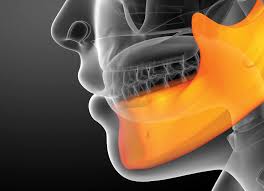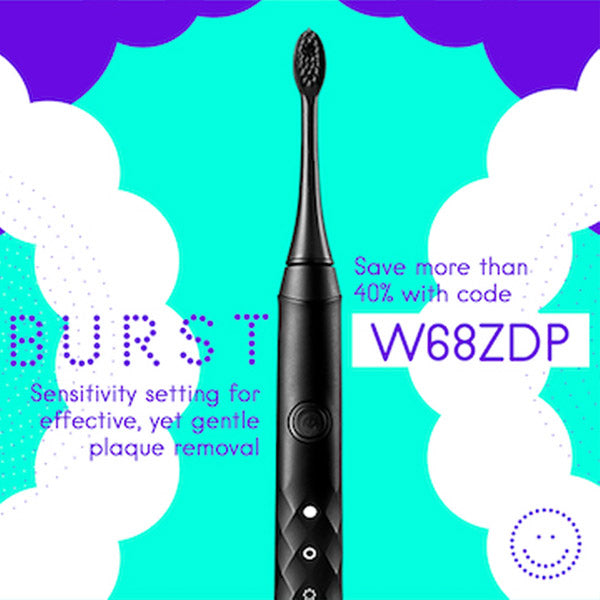Understanding Risks of MRONJ In Cancer Patients

photo credit: Update on Medicated-Related Osteonecrosis of the Jaw, Dental Academy of CE
Published: January, 13 2019
Cancer survivors are at risk for many unique oral health concerns. Understanding potential oral side effects of cancer treatments, such as Osteonecrosis of the Jaw, is a tremendous asset to both medical and dental professionals, enabling a team approach to provide well-rounded care, maintain quality-of-life and encourage successful outcomes.
What is MRONJ?
MRONJ, formerly known as bisphosphonate-related osteonecrosis of the jaw (BRONJ), is a rare but potentially serious condition that can occur as a side effect from certain medications. Both medical and dental professionals must be aware of the role that each of these medications plays in the treatment of cancers, along with the necessity for patient education and preventive oral care.
What medications put one at risk for Osteonecrosis of the Jaw and how do they work?
According to the American Association of Oral and Maxillofacial Surgeons (AAOMS) Position Paper, Medication-Related Osteonecrosis of the Jaw—2014 Update (2), medications related to developing Osteonecrosis of the Jaw include:
- Bone Resorptive Inhibitors
- Bisphosphonates
- Denosumab
- Sunitinib
- Bevacizumab
Bone Resorptive Inhibitors (BRIs)
Despite a different mechanism of action for bisphosphonates and denosumab, both are typically used in the treatment of osteoporosis and osteopenia to slow down or prevent loss of bone mineral density. Certain cancers and their treatments can leave the patient at increased risk for bone loss and conditions such as hypercalcemia, and skeletal related events (SRE). Examples of SREs include bone pain, fractures and spinal compressions.
Cancer-associated bone loss can be a result of multiple factors, including the direct effect of cancer cells and as a side effect of medications often used in cancer care such as corticosteroids, chemotherapeutic agents, aromatase inhibitors and androgen deprivation therapies; therefore, loss of bone mineral density is an increased concern for those being treated with hormone therapies for prostate cancer or hormone-receptor positive breast cancers. (1)
Most often we will see BRIs used for Multiple Myeloma and secondary cancers that have spread to the bone. The dosage for BRIs in cancer care tends to be much higher in comparison to when used for treating osteoporosis, increasing risks of associated side effects.
Sunitinib
Sunitinib (Sutent®) is classified as a tyrosine kinase inhibitor (TKI). This medication blocks the enzyme called tyrosine kinase, which plays a role in the process of cell division by sending signals to a cell to grow and divide. Blocking this enzyme can slow or stop cancer cells from growing, and in some cases, it can cause the cells to die. Sutent® can also block a process called angiogenesis by inhibiting the protein, vascular endothelial growth factor (VEGF). Angiogenesis is the growth of blood vessels that occurs in both healthy and diseased tissue. Blocking the formation of blood vessels to tumors can literally starve cancer cells. Sutent® is most often used with advanced kidney cancer, pancreatic cancer and Gastrointestinal Stromal Tumor (GIST).
Bevacizumab
Bevacizumab (Avastin®) is also an anti-angiogenic agent that blocks VEGF to prevent the growth of new blood vessels, including both normal blood vessels and those that feed tumors. Avastin® is currently approved for treating several types of cancer, including cancers of the colon, kidney, lung, ovaries, brain and cervix.
Additional medications may pose risks for Osteonecrosis of the Jaw
Angiogenesis inhibitors are considered a type of Targeted Therapy in oncology. While sunitinib and bevacizumab are the only angiogenesis inhibitors listed in the AAOMS update, other medications have similar mechanisms of action, are used to treat additional types of cancers and may prove to have similar risks. According to the AAOMS, "Osteonecrosis is classically considered an interruption in vascular supply or avascular necrosis, and therefore, it is not surprising that inhibition of angiogenesis is a leading hypothesis in ONJ pathophysiology." (2)
Combining medications raises risks for Osteonecrosis of the Jaw
At times, BMIs are used in conjunction with antiangiogenic medications, therefore, raising the risks for developing Osteonecrosis of the Jaw. Patients receiving concomitant treatment with VEGFR-TKIs and BRIs have a five to ten times higher risk for development of MRONJ compared to patients treated with BRIs alone. (3)
Signs and symptoms of MRONJ:
- Pain, swelling, redness, or other signs of infection in the gum tissue
- Oral tissue that doesn’t heal after dental work
- Loose teeth
- Numbness or a heavy feeling in the jaw
- Drainage
- Exposed bone
Reducing risks for developing Osteonecrosis of the Jaw
The AAOMS Special Committee on MRONJ supports a multi-disciplinary approach to reduce risks of developing Osteonecrosis of the Jaw, including early intervention with preventive dental care and patient education. “The implementation of dental screening and appropriate dental measures before initiating antiresorptive therapy reduced the risk of Osteonecrosis of the Jaw in several prospective studies when compared in a retrospective fashion to patients who did not undergo dental preventive measures.”
Preventive dental measures prior to starting medications (4):
- Patient education about risks, signs and symptoms of Osteonecrosis of the Jaw
- Oral hygiene instructions to reduce bacterial burden within the mouth, prevent dental decay and infections while avoiding tissue trauma
- Lifestyle counseling on diet, tobacco use and alcohol consumption
- Radiographs to identify treatment needs or infections
- Complete any remedial dental procedures
- Extract teeth with poor prognosis
- Adjust or replace ill fitting dentures or partials to minimize tissue trauma
- Personalized products recommendations including fluoride toothpaste, fluoride rinses and prescription fluoride if indicated.
After medications have been initiated, routine dental visits and impeccable oral hygiene are encouraged. Continued collaboration between medical and dental professionals is essential to reduce incidence of MRONJ. Early intervention, patient education and preventive oral care can preserve quality- of-life for patients at risk.
About The Author
Jill Meyer-Lippert is a Registered Dental Hygienist with 20+ years’ experience and the founder of Side Effect Support LLC, www.sideeffectsupport.com. She serves to promote proactive oral care in oncology to improve quality-of-life and treatment outcomes. For more information, email Jill at jill@sideeffectsupport.com or call (920)629-1263
References:
(1) Osteoporosis and Cancer, Matthew T. Drake, M.D., Ph.D
https://www.ncbi.nlm.nih.gov/pmc/articles/PMC3783531/
(2) Medication-Related Osteonecrosis of the Jaw—2014 Update https://www.aaoms.org/docs/govt_affairs/advocacy_white_papers/mronj_position_paper.pdf
(3) Incidence of medication-related osteonecrosis of the jaw in patients treated with both bone resorption inhibitors and vascular endothelial growth factor receptor tyrosine kinase inhibitors
https://www.ncbi.nlm.nih.gov/pubmed/28963584
(4) Oral Health Management of Patients at Risk of Medication-related Osteonecrosis of the Jaw
http://www.sdcep.org.uk/wp-content/uploads/2017/04/SDCEP-Oral-Health-Management-of-Patients-at-Risk-of-MRONJ-Guidance-full.pdf




